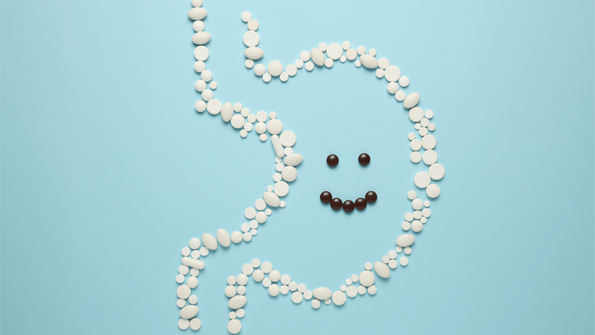Your in-depth guide to gut health!
Posted
Updated October 06, 2025

Posted
Updated October 06, 2025
-v1590708143096.jpg?4016x6016)

Gut health is an absolutely essential component of total body health. We cannot have regulated moods, well-functioning brains, resilient immune systems, balanced hormones or optimal fertility without a healthy gut. So how do we ensure gut health?
The first step to a healthy gut is to remove anything that is irritating the gut, impairing digestive function, or causing inflammation. Those factors all make it harder for the body to break down the food we eat and absorb nutrients. If this impairment is severe, and/or ongoing, it can result in malabsorption, nutrient deficiencies, dysbiosis and all sorts of digestive symptoms like gas, bloating, diarrhea, constipation, abdominal pain, indigestion, etc. Some things are universally irritating to human digestive tracts, such as:
Most people should ideally be consuming these things only occasionally and in moderation. However, if you are experiencing significant issues with your gut, you may benefit from cutting these things out entirely for a period of time. Individuals may also be irritated, inflamed or impaired by other things. This is largely dependent on an individual’s particular sensitivities and digestive capacity. People with weakened or damaged digestive systems commonly react to, or have trouble digesting gluten-containing foods, dairy, refined sugars, legumes and even some gluten-free grains. As with the universally irritating things, most people would benefit from consuming these foods only in moderation. Some people may benefit from avoiding them entirely, while they are healing their gut. Any type of gut infection (bacterial, parasitic, fungal) can also cause significant damage to the digestive tract and digestive function. Infections must be addressed and treated first, prior to healing the gut.
Once the substances causing irritating and inflammation have been eliminated, the next step is to provide the digestive system with anything it is missing that is necessary for digestion and general health. Difficulty digesting animal protein and legumes may be an indication of low stomach acid. Bitter foods, bitter herbs and/or a betaine HCl supplement can support the body’s production of stomach acid. A generally weakened or inflamed digestive system may have trouble digesting most foods, especially those that are high in fibre like vegetables and legumes or grains, and so may benefit from some digestive assistance via a digestive enzyme supplement. Both of these support methods can be really helpful, but are insufficient to correct the problem on their own, and shouldn’t be taken long term. It’s important to make sure they are just one component of a gut healing treatment plan! Individuals who have been experiencing chronic digestive issues may also have specific nutrient deficiencies; some of the most common ones are vitamin D, iron, vitamin B12, and magnesium. It’s always important to get these things checked, and corrected if necessary.

They are great to consume regularly in your diet, to keep your gut flora happy and healthy.
While probiotic foods are a great source of good bacteria, probiotic supplements provide much higher doses of good bacteria. This is often necessary to help folks whose gut flora have been damaged. Choose a good quality probiotic supplement that has multiple different strains, and be sure to take it daily with food, for the duration of your gut-healing plan, as directed by your clinician.
And lastly, it’s vital to ensure that you are providing all those good bacteria with the nutrients they need to stay alive in your gut. Prebiotics are a category of fibre that human digestive systems can’t break down, but that our gut flora can use as fuel. Ensuring you have a good amount of prebiotic foods in your diet is necessary to maintain your gut health, and supplementing with a prebiotic fibre can be useful when trying to correct dysbiosis and repair the gut.
We’ve now removed all the irritants, replaced all the missing nutrients, and repopulated the community of good bacteria. The next step in gut healing is to repair any damage that may be present in the gut tissue itself. In some individuals who have been experiencing inflammation, indigestion and dysbiosis for long periods of time, physical damage to the intestinal walls may have occurred. This can weaken the integrity of the intestinal barrier and allow for food particles (and hormones, toxins and other molecules) that shouldn’t be able to leave the intestines and enter into the body to do so. (This is often what’s happening in individuals who are experiencing “leaky gut”.) In addition to allowing inappropriate molecules into the body, the damaged intestinal membranes can also further exacerbate digestion issues. That is because those membranes produce a large number of our digestive enzymes. Collagen and L-glutamine are two of the key molecules used by the body in repair of a damaged intestinal lining. Soothing herbs like marshmallow root and aloe vera can help to alleviate some of the irritation. Vitamins A, C, E, Selenium and Zinc are also often used to support the repair of a damaged intestinal lining, as these are some of the most vital nutrients necessary for tissue healing.

-v1590708143096.jpg?4016x6016)
Dr. Jessica Eastman is a licensed and registered naturopathic doctor in clinical practice in Vancouver BC. She is an experienced faculty member at the Institute of Holistic Nutrition, and the founder of Thrive clinical mentorship. Jessica strongly believes in integrative medicine and the value of a supportive community.
Get expert-backed health tips, education, product news, and exclusive offers delivered to your inbox.
Follow @organikahealth for your daily dose of feel-good. #LiveOrganikally